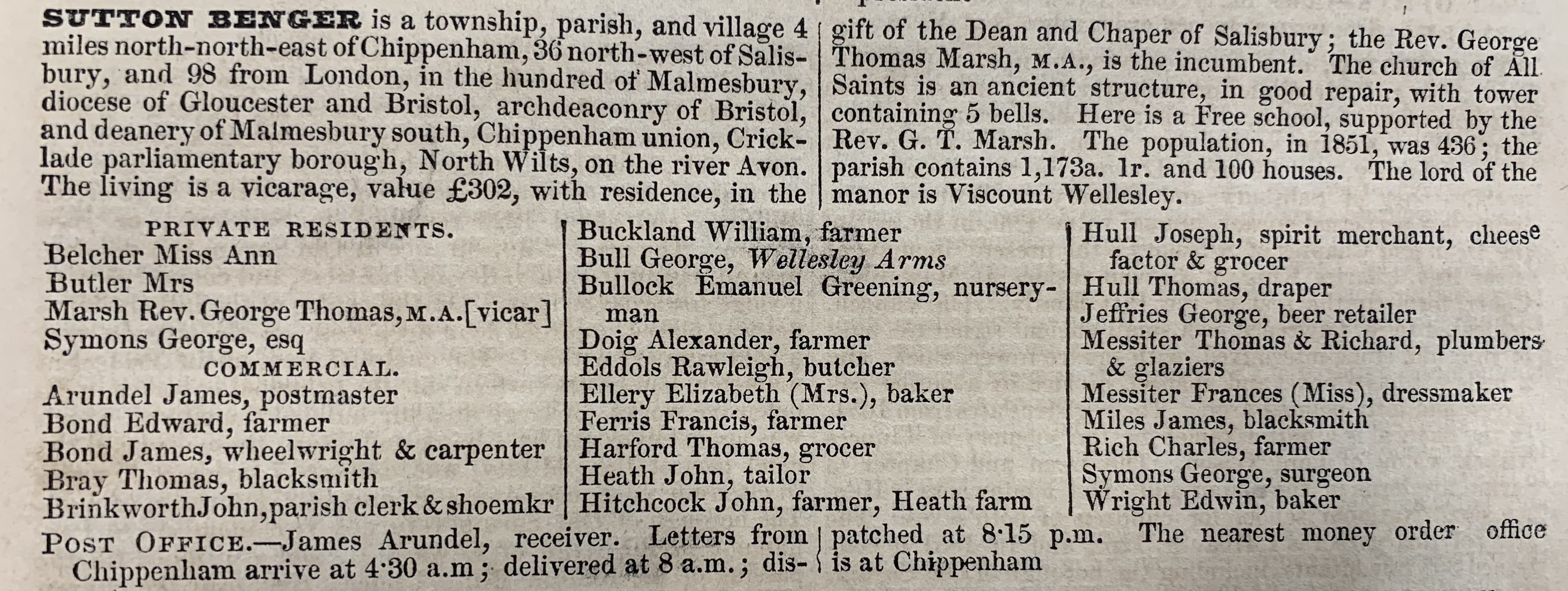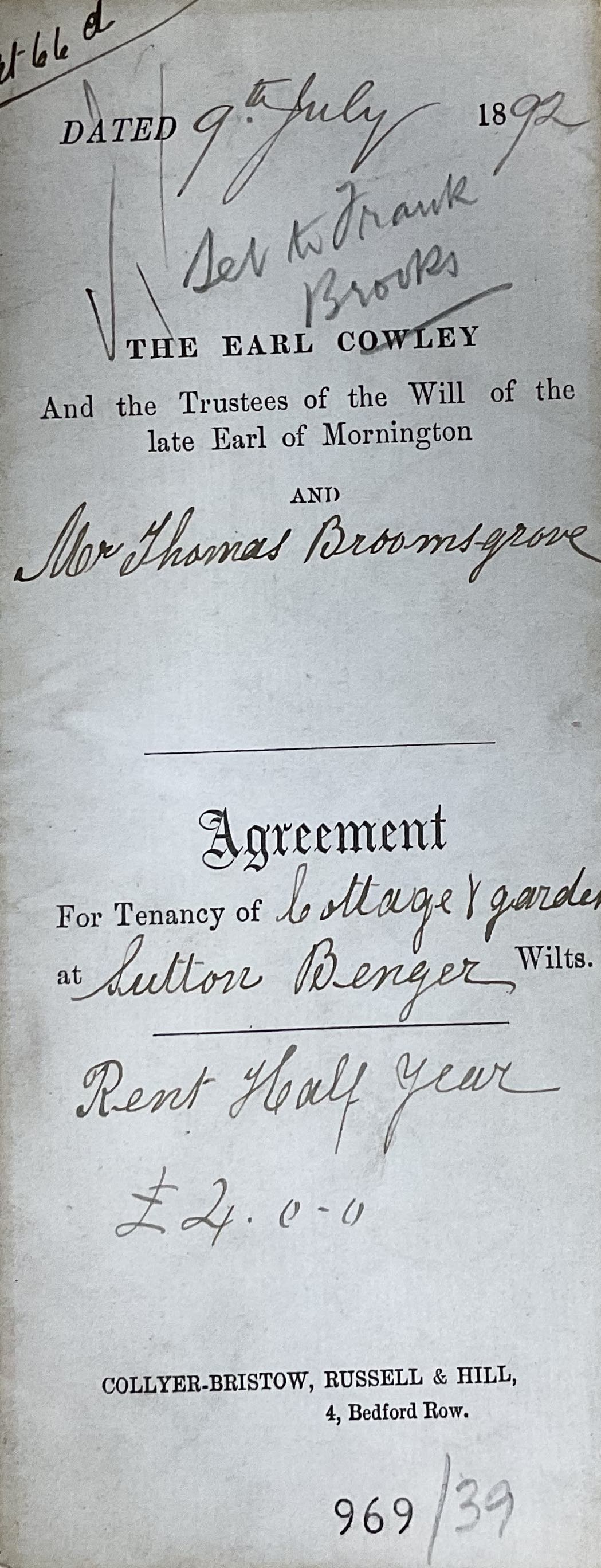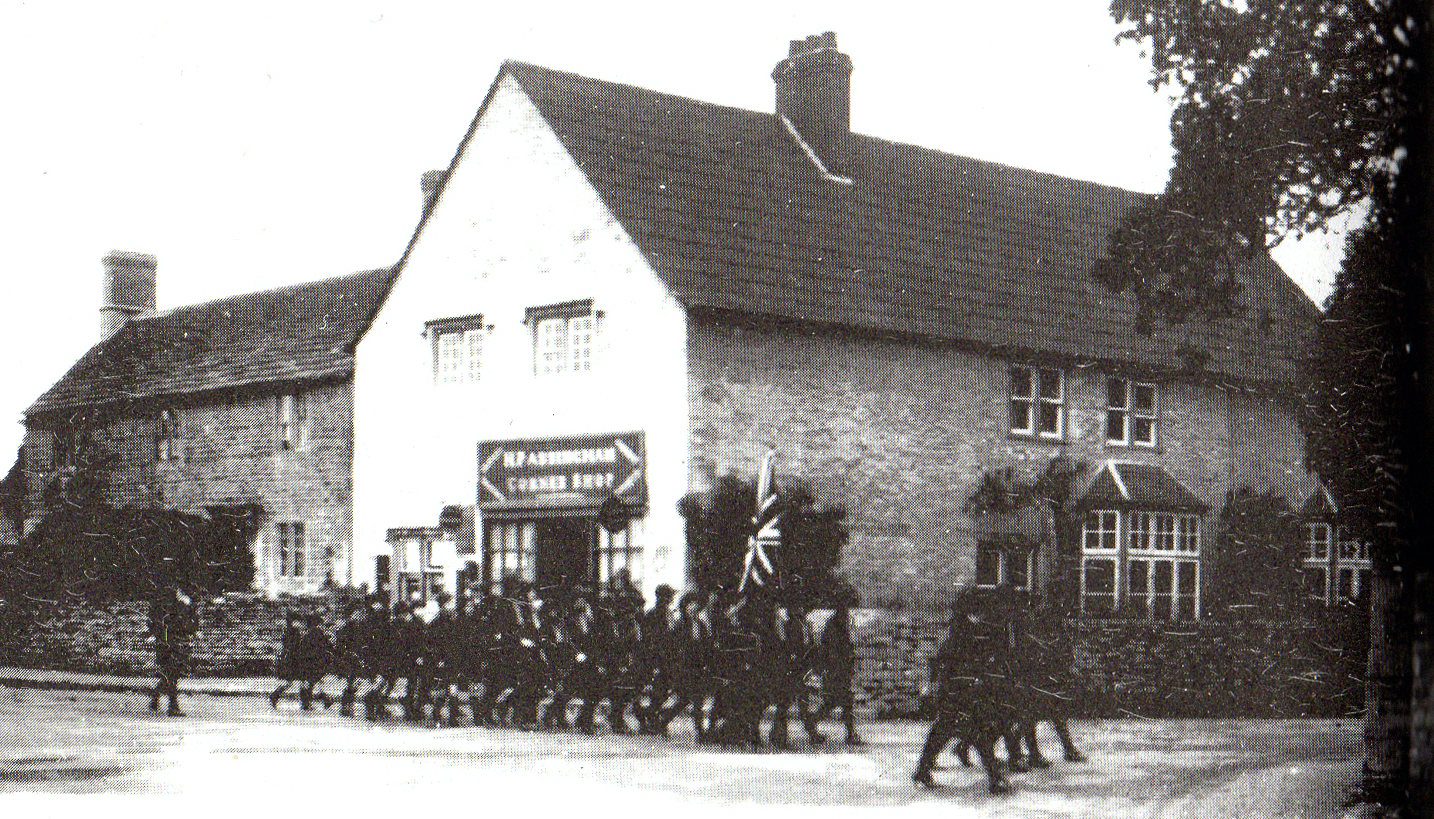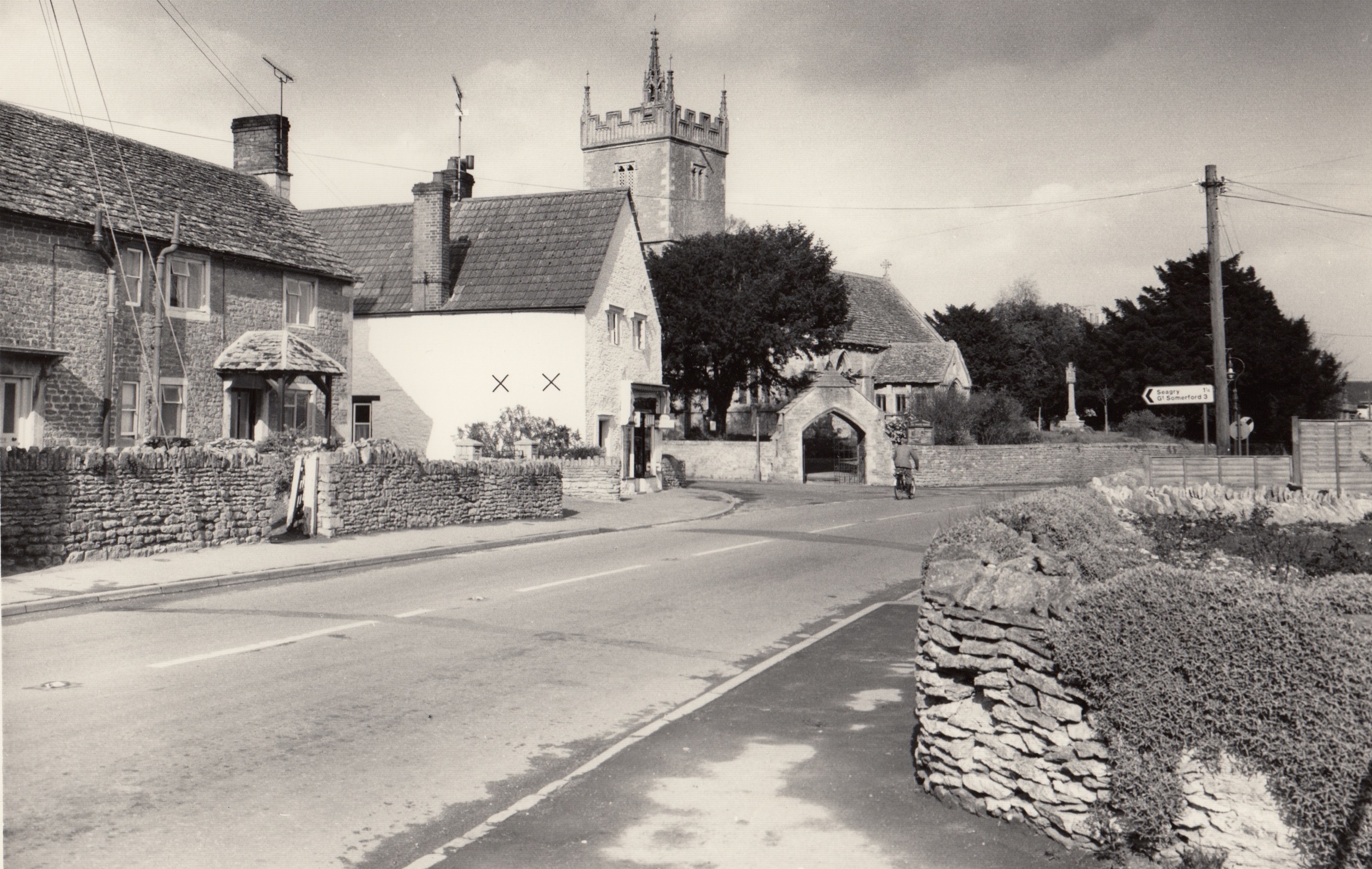The Blacksmith's Shop; 1800 - 1850s
The 1808 Survey describes the building on the corner of High Street and Seagry Road as a 'house and garden (and smith's shop)' - suggesting that there was a blacksmith's here. However, it is not clear where exactly the forge was located.
The building was rented in 1839 by John Lanfear, some of whose family at the time were mercers - dealers in textiles. The 1839 Tithe Survey describes it as 'two houses, gardens, shops, etc.' John Lanfear was still renting the property, but he was the farmer of a combined Church Farm / Harding's Farm, and had sub-let the corner shop building to Thomas Webb and Hannah Shingles. Hannah Shingles was a 70-year old pensioner, while Thomas Webb was a blacksmith; he still appears to have been in the property in 1851.
The first mention of a shopkeeper in Sutton Benger appears in a Kelly's Trade Directory in 1848, when there is a reference to 'Miss Eliza Ash, Shopkeeper'. It is possible that she was in the other half of the building with Thomas Webb. However, the evidence from the Censuses and Trade Directories becomes a lot clearer from 1859.
The Grocer's Shop; 1850 - 1915

In that year Thomas Harford, a grocer, was at this location, assisted by his wife Rebecca and by his niece Elizabeth Beetle. In 1871 Rebecca Harford, widow, was the grocer, assisted by both Ann and Elizabeth Beetle. But from 1872 to the mid 1890s the grocer was Ann Robbins. By 1901 it was Susan Broomsgrove, who gave her occupation as 'Grocer's Shop'. The lease of the property was actually in her husband's name, and his name appeared in a number of Trade Directories as the shopkeeper; however, he was not literate enough to be able to sign the lease, which only has his 'mark' with a cross. On the Censuses he gave his occupation as 'General Labourer on Estate'.

The Corner Shop; 1915 - 1940
Mr Frank Brooks was the shopkeeper from about 1915 to 1929, when the building was sold as 'Lot 91, two cottages', in the Draycot Auction. The purchaser was Mr George Eastwood, who is recorded as the shopkeeper from 1920 about 1930. He was followed briefly by Mr W Lavington, then by H Passingham, and then from about 1935 to the 1940s by Mrs Gertrude Annie Ball. The photo of the Guides marching to church on Remembrance Day, 1932, has the name 'H Passingham' over the entrance; note that the thatch of 1920 has been replaced by tiles by this date.

The Post Office
At some stage after 1939 the Post Office moved to the Corner Shop (from 43 High Street). There were two entrances: left was to the Post Office, and right for the shop. It is believed that the sub-post-mistress was initially Mrs Reeves, and then Mrs Stephens; but by 1945 it was Mrs Juggins (née Lucas). In about 1947 Mrs Juggins - and the Post Office - moved to 26 High Street, leaving the Corner Shop as just a shop again.

Do you remember the Corner Shop? Do you have any photos or anecdotes to share? Please get in touch at hello@bengertrails.co.uk

